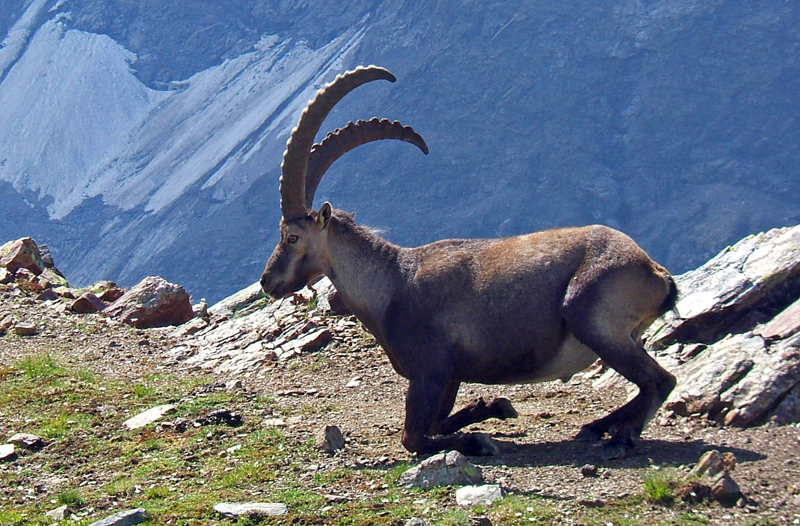Crete, the largest of the Greek islands, is renowned not only for its rich history and vibrant culture but also for its stunning natural landscapes. These diverse ecosystems provide a sanctuary for a myriad of wildlife species, making the island a paradise for nature enthusiasts. From rugged mountains and dense forests to serene wetlands and coastal habitats, Crete’s nature reserves offer an unparalleled opportunity to experience the island’s biodiversity up close. This guide explores some of the most notable nature reserves in Crete, highlighting the unique wildlife and natural beauty that make them a haven for wildlife enthusiasts.
Samaria Gorge National Park
One of the most famous natural attractions in Crete is the Samaria Gorge National Park, located in the White Mountains (Lefka Ori) of Chania. This UNESCO Biosphere Reserve stretches for 16 kilometers, making it one of the longest gorges in Europe. The park is home to a rich variety of flora and fauna, including several endemic species. The Cretan wild goat, or kri-kri, is a notable resident, along with species such as the golden eagle and the bearded vulture. The gorge’s diverse habitats, from rocky slopes to lush woodlands, support a wide range of plant life, including rare herbs and flowers found only in Crete. Hiking through Samaria Gorge offers wildlife enthusiasts a chance to observe these species in their natural environment while enjoying breathtaking scenery.
Psiloritis Natural Park
Psiloritis Natural Park, also known as Ida Mountain, is another UNESCO Global Geopark located in central Crete. The park encompasses the island’s highest peak, Mount Ida (or Psiloritis), which rises to 2,456 meters. This area is a biodiversity hotspot, featuring a mix of alpine meadows, oak forests, and rocky landscapes. The park is home to several endemic plants, such as the Cretan dittany and the rare tulip Tulipa cretica. Bird watchers will find the park particularly rewarding, as it is a habitat for birds of prey like the griffon vulture and the Bonelli’s eagle. The unique geological formations, including caves and gorges, add to the park’s allure, providing opportunities for both geological and wildlife exploration.
Dikti Mountain Range and Lasithi Plateau
The Dikti Mountain Range in eastern Crete, along with the Lasithi Plateau, offers another rich natural environment for wildlife enthusiasts. The plateau is known for its lush fields and traditional windmills, while the surrounding mountains are covered with forests of pine, cypress, and oak. The area supports a diverse array of wildlife, including the Cretan wildcat and various species of bats. The Lasithi Plateau is also a haven for birdlife, with species such as the hoopoe, the blue rock thrush, and the Cretan subspecies of the great spotted woodpecker. The numerous caves in the Dikti Mountains, such as the famous Diktaean Cave, add an element of adventure for explorers interested in both geology and biology.
Elafonisi Nature Reserve
Elafonisi, located on the southwestern coast of Crete, is a protected area famous for its pink sand beaches and crystal-clear waters. This nature reserve includes a small island connected to the mainland by a shallow lagoon, creating a unique coastal habitat. Elafonisi is an important nesting site for the loggerhead sea turtle (Caretta caretta), and its dunes and rocky areas are home to a variety of plant species, including the rare sea daffodil. Bird watchers can observe migratory birds and shorebirds, making it a prime location for avian enthusiasts. The combination of stunning natural beauty and rich biodiversity makes Elafonisi a must-visit for nature lovers.
Kournas Lake
Kournas Lake, the only freshwater lake on the island, is located in the Apokoronas region. This serene lake is surrounded by hills and is a vital habitat for numerous species of birds, including herons, cormorants, and ducks. The lake’s clear waters are also home to turtles, fish, and amphibians. Visitors can explore the lake by pedal boat or on foot, enjoying the peaceful surroundings and the chance to observe wildlife in and around the water. Kournas Lake offers a tranquil retreat and a different kind of natural environment compared to the island’s more rugged landscapes.
Sitia Geopark
Sitia Geopark, in the eastern part of Crete, encompasses a wide range of geological formations, from dramatic gorges and caves to fossil-rich coastal areas. The park is home to numerous endemic plant species and serves as a refuge for birds of prey, including the rare lammergeier. The diverse habitats within the park, from coastal cliffs to high-altitude shrublands, support a variety of wildlife. The geological history of the area, combined with its biological diversity, makes Sitia Geopark a fascinating destination for both geologists and wildlife enthusiasts.
Conclusion
Crete’s nature reserves offer an extraordinary opportunity for wildlife enthusiasts to explore a wide range of ecosystems and observe diverse species in their natural habitats. From the dramatic landscapes of Samaria Gorge and Psiloritis Natural Park to the serene waters of Elafonisi and Kournas Lake, each reserve provides a unique experience of the island’s natural beauty and biodiversity. Whether you are an avid bird watcher, a plant enthusiast, or simply someone who appreciates the wonders of nature, Crete’s nature reserves promise a memorable and enriching adventure.


